Lonar Lake – India’s Incredible Meteorite Crater
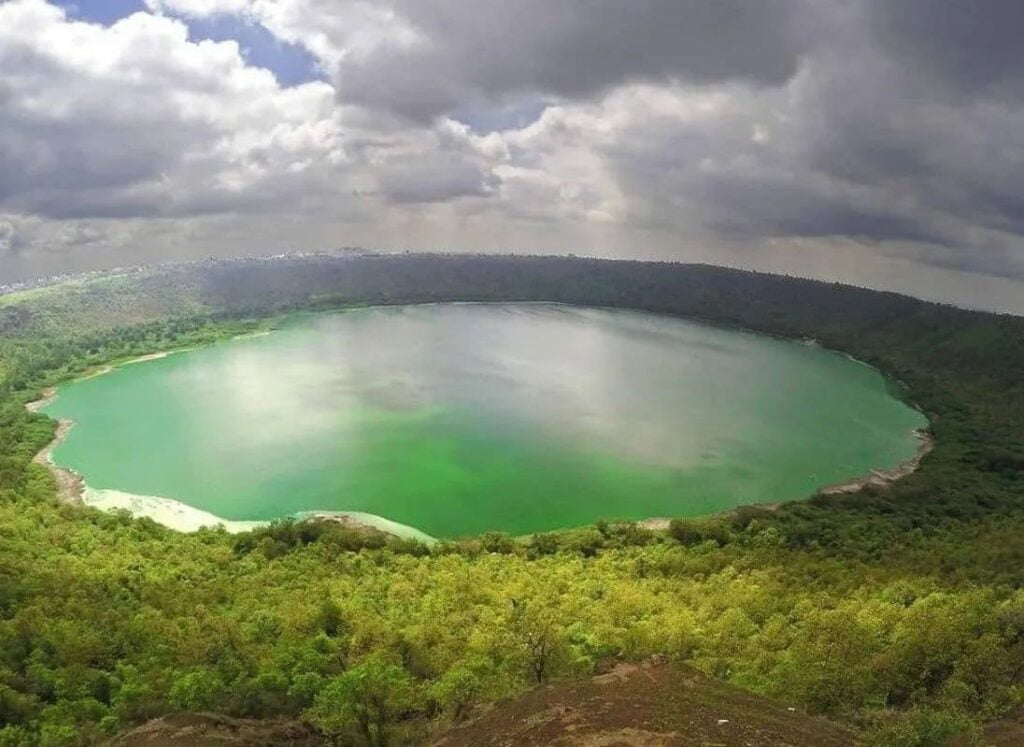
Nestled amidst the serene landscapes of Maharashtra, India, there lies a geological marvel that has captivated the curiosity of scientists and tourists alike for centuries – Lonar Lake. Unlike any other lake in India, Lonar Lake’s origin is steeped in cosmic wonder, as a meteorite impact formed it. In this blog post, we will explore the incredible Lonar Lake – India’s Incredible Meteorite Crater, shedding light on its formation, unique features, and the natural beauty that surrounds it.
India’s Incredible Meteorite Crater- Lonar Lake
- The Birth of Lonar Lake
- Geological Marvels
- Unique Lake Formation
- Rich Biodiversity
- Ancient Temples
- Cultural and Scientific Significance
- Tourism and Conservation
India’s Incredible Meteorite Crater
The Birth of Lonar Lake
Lonar Lake, also known as Lonar Crater, dates back around 52,000 ± 6,000 years, making it one of the youngest and best-preserved impact craters on Earth. Its creation is a result of a high-velocity meteorite collision with the Earth’s surface. The impact, which would have been a dramatic and cataclysmic event, caused the ground to melt and form a bowl-shaped crater.
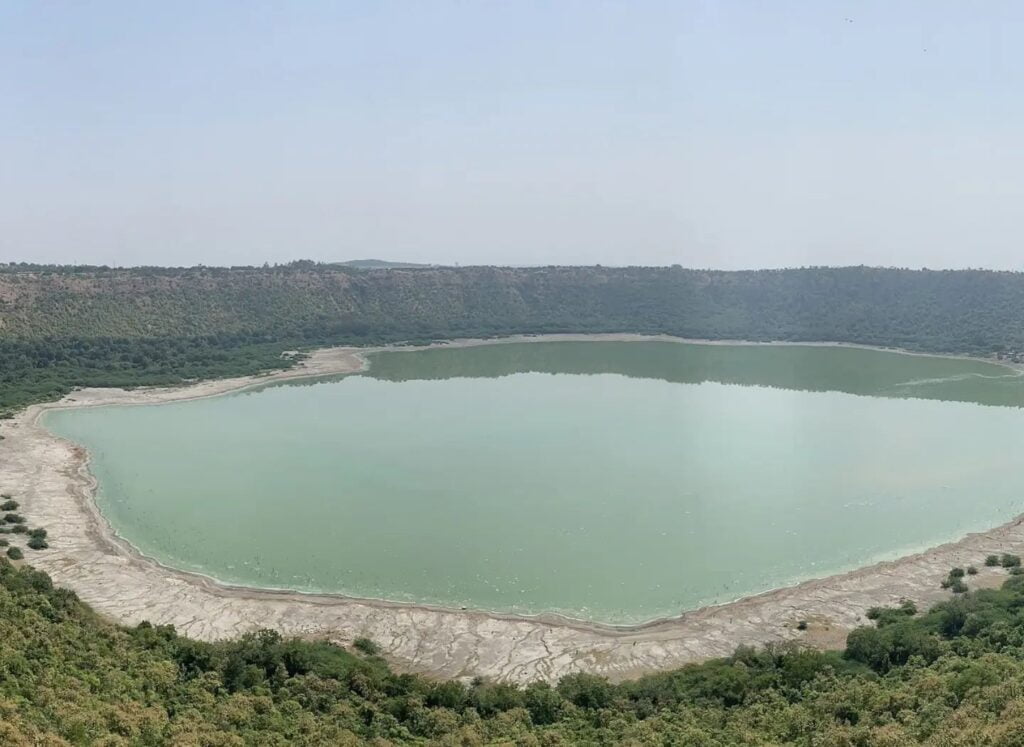
Geological Marvels
Bowl-Shaped Crater: One of the most distinctive features of Lonar Lake is its perfectly circular, bowl-shaped crater, measuring approximately 1.2 kilometers (0.75 miles) in diameter. This feature is a testament to the sheer force of the meteorite impact that created it.
Read More: Top Natural Places To Visit In Madhya Pradesh State
Unique Lake Formation
Lonar Lake stands out as one of merely four recognized hyper-velocity impact craters within basaltic rock worldwide. Sourced from natural springs and rainfall, the lake’s distinctive water possesses both alkaline and saline qualities, fostering a diverse array of aquatic life.
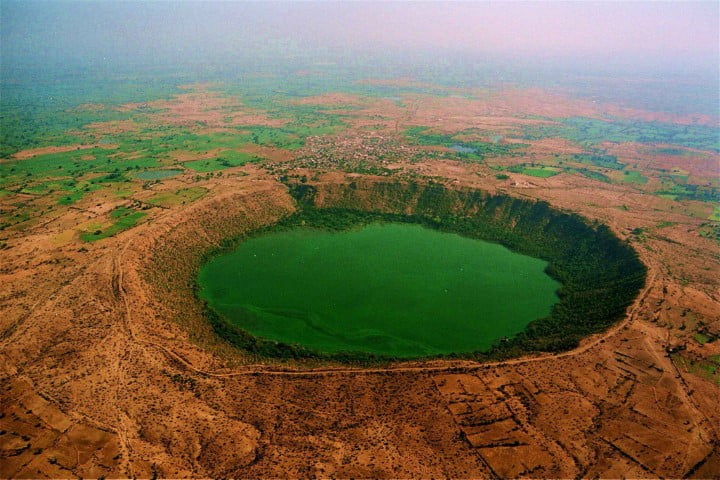
Rich Biodiversity
The lake and its surroundings form an ecological hotspot, hosting a wide range of plant and animal species. Birdwatchers can spot numerous avian species around the lake, making it a popular destination for wildlife enthusiasts.
Read More: Top Hill Stations of Uttarakhand State
Ancient Temples
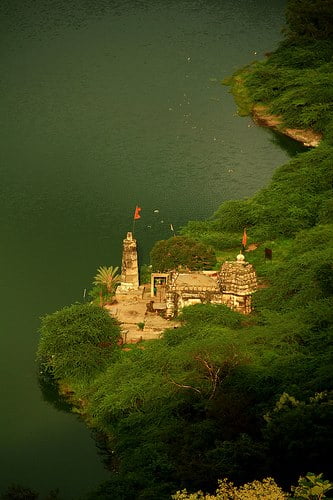
The Lonar crater also boasts several temples on its periphery, including the Daitya Sudan Temple and Kamalja Devi Temple, both of which are architectural wonders and have historical significance.
Cultural and Scientific Significance
Lonar Lake holds a special place in both cultural and scientific spheres:
Religious Significance:

The temples around the lake are revered by locals and attract pilgrims and tourists alike. The lake and its surroundings have been mentioned in ancient texts and folklore, further cementing its cultural importance.
Read More: Top Religious Places Situated On the Hill in Uttarakhand
Scientific Exploration:
Lonar Lake’s unique geological features have drawn the attention of scientists and researchers from various fields. It provides valuable insights into impact cratering processes and the geological history of our planet.
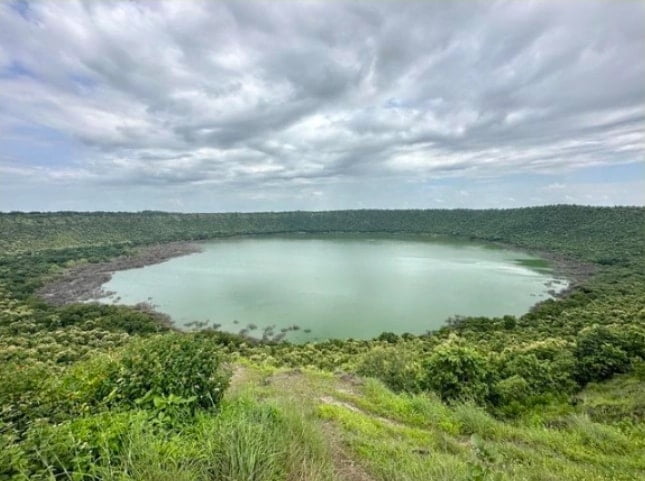
Tourism and Conservation
Lonar Lake has become a popular tourist destination, attracting visitors with its natural beauty, unique ecology, and historical sites. Efforts have been made to promote sustainable tourism and protect the lake’s fragile ecosystem.
Read More: 10 Must-Visit National Parks in India
Conclusion
Lonar Lake is not only a geological wonder but also a cultural and ecological treasure trove. Its formation by a meteorite impact serves as a reminder of the dynamic processes that have shaped our planet. Whether you’re a geology enthusiast, a nature lover, or a history buff, a visit to Lake is sure to leave you in awe of the incredible forces that have shaped this hidden gem in the heart of India.




